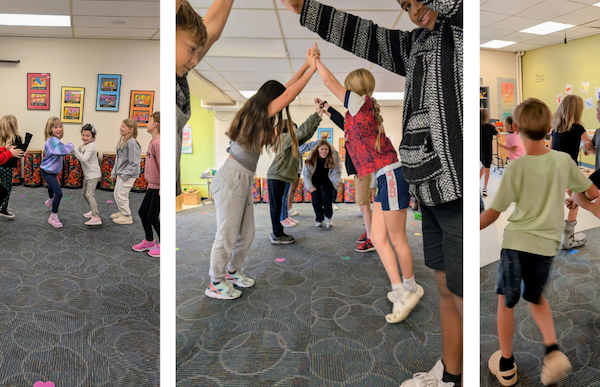
Helpful Tips from Parents When You Have a Child with ADHD
March 10, 2020
Springer Makes a World of Difference
March 24, 2020
Many years ago, I read an article in U.S. News and World Report about ADHD. Within the article was a noteworthy, timeless quote from Brian Cohan who, at the time, worked at the Hallowell Center. “I tell patients that if you are going to have anything, this is the disorder to have. It’s like training a dragon on a leash. It may drag you around for years, but once you get it under control, you own all the magic and energy, and it’s yours forever.”
At Springer School and Center, we work with students to take control of the dragon through learning about how ADHD affects learning and the brain, using that understanding to employ strategies and advocate for themselves, and working through any behavioral difficulties that inattention or impulsivity may produce.
Just as this quote from 2004 was timeless, so are these three of many great strategies for supporting ADHD and executive function challenges across the life span.
Strategy 1: A strategy to support activation toward managing daily tasks can be summed up by remembering, “N0W”.
N-NOTE the habit you're trying to develop
0- “0” tolerance for procrastination.
W-Don’t wait! There is no time like NOW!
It might look like this: Jen’s bathroom is a mess with piles of clothes, tissues, toothpaste cap separated from the mangled tube, towels and washcloths thrown everywhere. While she intends to go back and tidy up, it is a rare occurrence. Jen is often embarrassed when someone goes in to use her bathroom unexpectedly. After seeking help for her disorganization, she decided to try the NOW strategy to gain control of the mess. The first step was to post the word NOW on a sticky note on her bathroom mirror to remind her of the commitment.
N: The habit Jen identified was to complete small tasks immediately and quickly, so they didn’t turn into a mountain of time-consuming chores.
0: Jen committed to having zero tolerance for moving to a new activity before completing the simple tasks identified as problematic. NOTHING HITS THE BATHROOM FLOOR! There’s NO TIME LIKE NOW!
W: Jen verbalized “NOW” when she wanted to revert to the old behavior of moving on before completing a task.
The process:
-
Commit to the process.
-
Use visual and verbal cues to activate.
-
If you slip, get back on the horse immediately! No time like NOW.
-
Give yourself time. It takes a couple months of consistency to change a habit.
-
Celebrate your small steps forward to accomplishing your new habit.
Strategy 2: Dr. Russell Barkley has written extensively about how “the process of regulating behavior by internally-represented forms of information is impaired or delayed in those with (ADHD)EF deficits.” Further, he reports that the same individuals “will be best assisted by ‘externalizing’ those forms of information...” Simply said, take information held in the brain, and bring it out of the brain and into the external environment. So, how does one externalize information that the neuro-typical individual generally manages internally with ease?

Strategies to externalize working memory also support self-regulation, and are often employed when an individual has difficulty planning, organizing and prioritizing thoughts or projects, and remembering multiple-step directions or items.
A few examples of external strategies:
-
Writing things down (notebook or technology)
-
Making checklists
-
Taking pictures of things you want to remember
-
Mapping out the exact process you want to use to accomplish goals like long-term projects, planning for an event, or completing a writing assignment
-
Using calendars and documenting each step of the process on a definitive date
-
Finding an accountability partner to check in with along the way to completion
Strategy 3: All brains need refueling, and the ADHD brain needs an explicit plan to keep the cognitive juices flowing. Self-care reduces stress, anxiety, hyperactivity, and encourages focus and ease. Even unstructured downtime, “sharpens the saw” (Franklin Covey).
Strategies to support the refueling process include exercise, meditation, leisure walking, engaging in any nature activity outdoors, or taking standing/timed brain-breaks. It is also critical to take a brief amount of time and turn down the noise in your head. Try to turn off the fire hose of information by simply pausing, closing your eyes and reflecting on one single peaceful image or thought.
Let us know in the comments below if you have any tips or strategies that support ADHD brain management. We are a village ready to listen, commiserate, cheer for your success and strategize with you around challenges.
Blogger Barbara Hunter, MEd, shares her expertise in the use of technology to support learning. If you have questions, please contact Barbara at .



